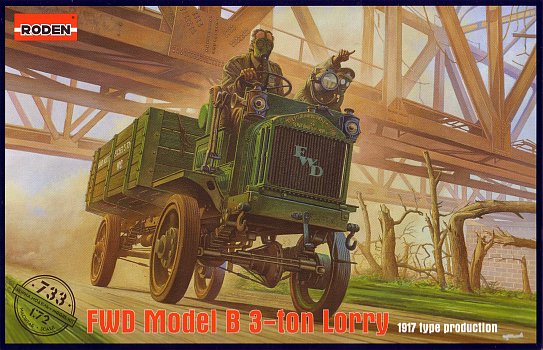|
A Brief History
The Badger Four Wheel Drive Auto Company was established early in the 20th century, the company later dropping the Badger moniker in its name.
In 1912 the US Army tested one of the very first FWDs, and in 1916 they
ordered 38 Model Bs for General Pershing's Mexican campaign against Pancho Villa. With the outbreak of war in Europe, Model Bs were ordered by the
British and Russian governments. In 1917 the United States entered the war, and US Army orders were so great that production had to be farmed out to
three other companies (Kissel, Premium & Mitchell).
The U.S. Ordnance Department had the benefit of nearly three years observation of the war in France and an early decision was taken to avoid the use of horse-drawn
artillery equipment in the American Expeditionary Force as much as possible. Thus the Americans went to war from the start with the emphasis on mechanical rather
than horse-drawn transport. No less than 30,000 four-wheel drive vehicles were ordered of which 12,498 had been delivered by the time of the Armistice. Of these
9,420 went to France. American vehicle bodies were almost entirely steel while the British range of FWD bodies were wood.
Its versatility and reliability kept the Model B in production until the early 1930's for civilian use.
The Kit
The kit comes in the typical Roden flimsy end opening box which must be at least 5 times larger than its contents. Inside are two small sprues of medium
green injected plastic, a minuscule decal sheet
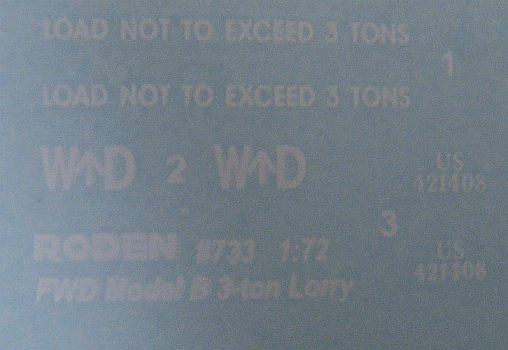
and an 8 page instruction manual. Sprue A is mainly for the frame, suspension and cab, while sprue B primarily has the box and wheels. The decal images are a mixed bag. The
serial number for the US Army version and the weight limit warning for the British lorry look to be well printed, whereas the W^D images look somewhat fuzzy
and I fear that they may prove to unusable unless obscured with some mud or weathering.
Sprue A
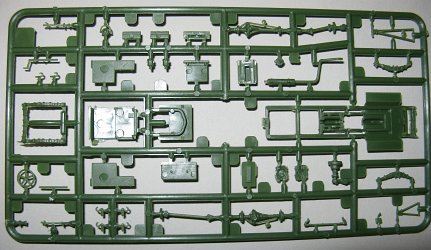
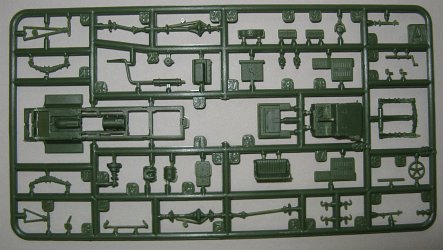
|
Inspection of the sprues shows part detail as quite nice. The suspension looks to be excellently represented though I'd guess it will be a bit
tricky to put together and looks to be on the delicate side. There is a fair bit of paper thin flash on some of the parts that shouldn't be too difficult to remove.
Ejector pin marks appear to be mainly in spots that will be covered or hidden by other parts, unlike those found in their VOMAG 7 or 660 mit 8,8cm Flak kit
(no. 727), which was rife with ejector pin marks, often in obvious or difficult to fix places. Seams look to be minimal although there are enough that
they can't be ignored.
The only item that gives me pause is the fuel tank. Roden has represented it as a cylinder (as on the restored example at the Imperial War Museum in Duxford), while most
period photos show it to be a rounded rectangle. Also, it may be that the wood box represented in the kit is more relevant for a British, rather than an American, vehicle.
|
Sprue B
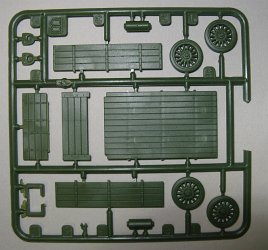
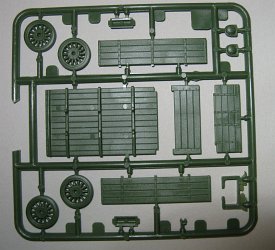
|
Unfortunately there are a few low spots on the box's floor (part 5B) that span the full width of the floor directly above the spots where the underside supports run
(they can be seen in the left most picture of Sprue B), and will either
need to be repaired or covered over with a load of some sort. |
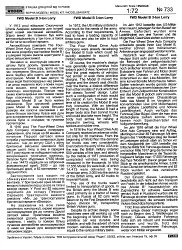
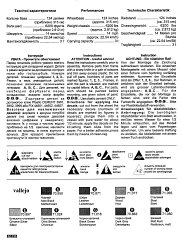
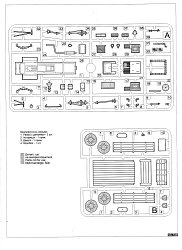
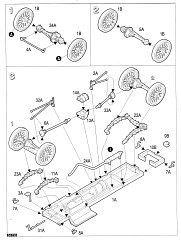

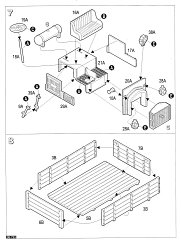
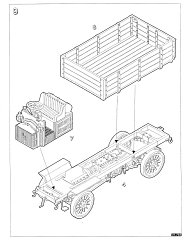
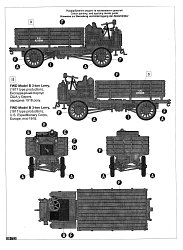
Construction covers 9 steps, laid out in the typical exploded diagram format. The colouring and decal placement guide is in two locations. The US Army version
is on the last page of the instructions. The British Army version is in colour on the rear panel of the box (below).
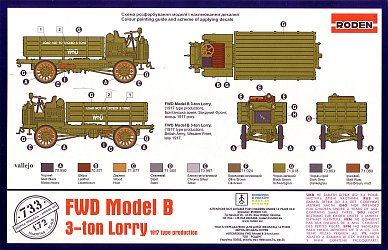
Paint call outs are for Vallejo Model Color acrylics.
Conclusion
This will in all likelihood make into a nice rendition of this important WWI truck though it will not be a quick build by any means.
Addendum: 08/July/2020
I have to qualify the above statement regarding this truck. The BL 8-inch Howitzer Mk.VI kit no. 713 which also contains this vehicle, and the difficulties
experienced with constructing the gun & limber (reviewed here), I would like to repeat that building this
truck will most likely be a long and challenging prospect.
References
[1] landships (Forum thread)
[2] landships (Article)
[3] hmvf.co.uk (Historical Military Vehicle Forum)
[4] www.offroadvehicle.ru
[5] www.offroadvehicle.ru
[6] wwimodeller.co.nz (1916 Canadian FWD)
[7] onlytruecars.com
[8] onlytruecars.com
[9] wikipedia
[10] www.militaryfactory.com
[11] Jack Snell photos (restored FWD)
[12] landships (Another forum thread)
[13] Massimo Foti photos (FWD at Strängnäs Arsenalen in Sweden)
Preview sample purchased by the author.
Roden products are available at

|
